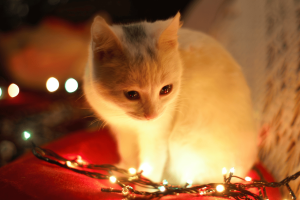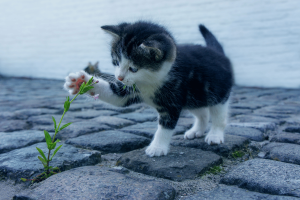Cats are known for their mysterious and playful nature. They leap, chase, hide, and pounce as if they live in their own magical world. One of the most interesting parts of their behavior is how they react to light and shadow. If you have ever noticed your cat staring at a reflection or jumping at a moving shape on the wall, you have seen this curiosity in action. Understanding why this happens can help you create a happier and healthier play environment for your cat.
Before exploring the science of feline curiosity, it is helpful to know that cats are natural hunters. Even if your cat lives indoors and enjoys a comfortable life, that instinct never fully goes away. Because of this, certain movements, especially small or quick ones, can trigger their desire to play or “hunt.”
Why Cats Love Movement
Movement immediately catches a cat’s attention. Their eyes are designed to notice motion more than still objects. When a shadow dances on the floor or a beam of light flickers across the wall, it feels alive to them. This excites their hunting instinct, and they want to chase it. Many experts explain that this playful chase is not just fun for cats. It also keeps their minds active and sharp.
If you want to learn more about caring for your cat’s mental and physical health, you can explore helpful guides at The Pets Lover, where simple pet-friendly advice makes cat care easier to understand.
Additionally, cats have great patience. They may sit still for several minutes watching a single tiny movement. This silent waiting is also part of their natural hunter behavior. So, when your cat suddenly jumps at a shadow, it may feel surprising to you, but to your cat, it is the perfect moment to pounce.
How Light Affects Playtime

Many cats show extra excitement when they see reflected lights, sunlight beams, or glowing objects. For example, some owners enjoy using flashlights or laser pointers to play with their cat. While this can be fun, it is important to guide play safely. Cats should feel success sometimes, meaning they should be able to “catch” a toy at the end, so they do not become frustrated.
You may have noticed that cats are fascinated by lantern lights too. Soft glowing lights or gentle moving shadows from lanterns can create a calm and interesting environment. These light patterns can encourage quiet play, observation, and even relaxation.
When sunlight shines through windows, cats often follow the moving light as the day passes. They may nap in warm sun spots or play with shadows from leaves outside. This natural behavior supports emotional well-being and reduces boredom.
The Role of Shadows in Cat Behavior
Shadows are mysterious and exciting to cats. A shadow changes shape and size as something moves in front of a light source. This unpredictable motion makes shadows interesting targets. Because shadows are not solid, cats do not catch them, but the chase itself provides physical exercise and mental stimulation.
However, it is important to make sure that shadow play is balanced. If your cat becomes too focused on shadows or reflections, this could lead to stress or frustration over time. To prevent this, provide real toys your cat can catch. This gives your cat a sense of accomplishment.
You can find more helpful ways to support healthy cat behavior in the pet care section on this pet care guide. Simple changes to your home environment can greatly improve your cat’s play experience.
Fun Ways to Create Healthy Play with Light and Shadow
It is easy to bring gentle light-based play into your home. Here are some safe and fun ideas:
Use reflective toys:
Small toys that catch light offer fun without too much intensity.
Let your cat explore sunny areas:
Most cats love warm places and sunbeams. Place a cat bed near a window to encourage natural movement and relaxation.
Use a flashlight with care:
Move slowly and allow your cat to “win” by landing on a physical toy at the end.
Encourage climbing:
Light looks different from high places. A cat tree allows your cat to watch sun patches move across the room.
Rotate toys:
Changing toys regularly helps prevent boredom and keeps curiosity fresh. These playful experiences help your cat build confidence and feel more satisfied in daily life.
Why Understanding These Behaviors Matters

When you understand why your cat behaves in a certain way, you can respond with care and patience. Playing with light and shadow is not random. It is a meaningful part of how cats stay alert, active, and emotionally healthy. Encouraging natural play also strengthens your bond with your cat. Your home becomes a place where your cat can express their instincts in a safe and joyful way.
Cats who do not receive enough play may feel bored or anxious. Their behavior may become restless or destructive. However, regular play that involves chasing, jumping, and exploring helps reduce stress. It allows your cat to feel secure and happy.
Final Thoughts
Feline curiosity about light and shadow is a beautiful reminder of the wild instincts our cats carry. Whether they are chasing a small flicker of light or sitting quietly watching a shifting shadow, they are connecting with ancient hunting behaviors. By encouraging these playful moments in safe ways, you support your cat’s physical health and emotional well-being.
With gentle guidance and thoughtful play, your home can become a place where your cat feels both adventurous and comfortable. And as your cat explores these light and shadow worlds, you may find yourself seeing your surroundings with new wonder too.
Understanding your cat’s needs opens the door to deeper connection and joy.










